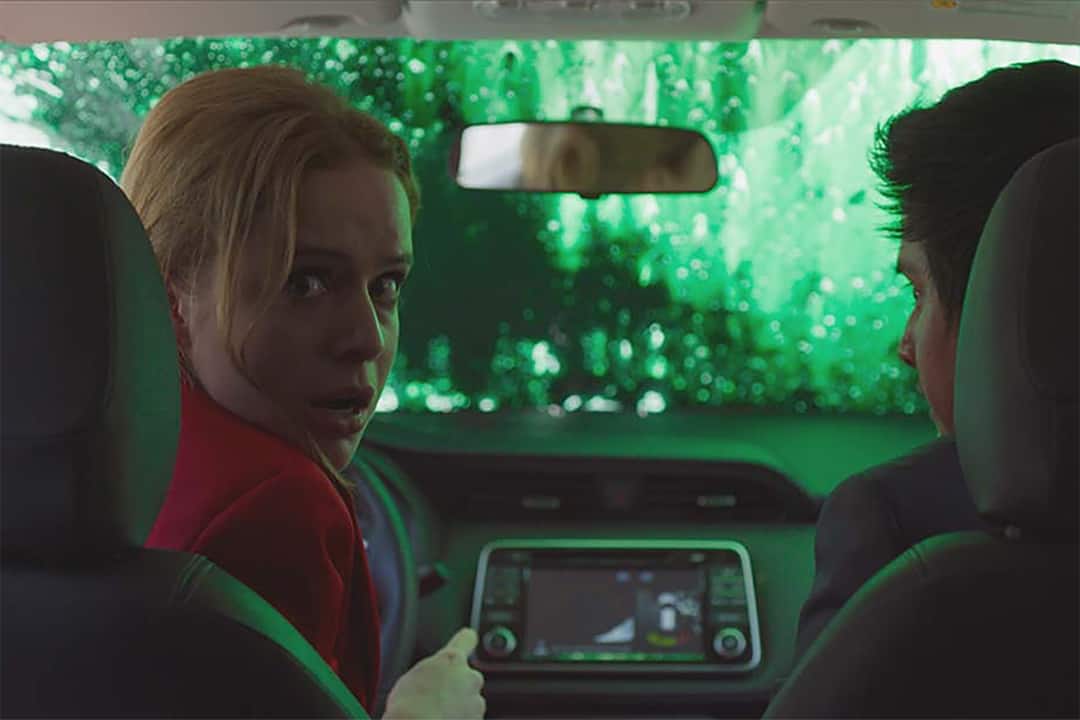In New Order, writer and director Michel Franco serves up a gruesome depiction of class struggle and corruption in protest-ridden Mexico City. Unfortunately, as its runtime elapses, the film’s attempt to offer thrills and insight is drowned out by its unrelenting violence and pessimism.
The film opens with a series of quick shots depicting acts of violent rebellion and piles of corpses covered in green paint, a substance that serves as a symbol for the unrest pervading Franco’s Mexico City. We then see protestors raid a hospital, pulling patients from their beds to make room for rebel wounded.
After these disturbing vignettes, the film suddenly switches gears, planting viewers at an upscale wedding. Wealthy family members give gifts and chat affably as if thoroughly insulated from the chaos depicted in the film’s first minutes. The juxtaposition is effective, if obvious.
Despite the party’s idyllic atmosphere, however, subtle details suggest that mayhem is encroaching. The first signal comes when the bride’s mother turns on the tap to find it running green — the same colour used by protestors to spray paint their revolutionary slogans. The same shade is then found threateningly spewed on a guest’s car.
This wedding sequence, which takes up the first act, is where the film really excels. Franco creates a palpable sense of hidden danger that seeps into every corner of the party, much like the green paint that clings to the streets of New Order’s Mexico City. He then ratchets up the tension to its shrieking climax, when ragged protestors clamber over the mansion’s walls and terrorize its occupants.
The rest of the film, however, is less inspired and impactful. The bride-to-be, who left the wedding to help an ailing former employee, ends up kidnapped by soldiers for ransom and imprisoned with scores of others who have been abducted by the military. From this point on, the film is a whirlwind of violence and death.
In scene after scene, Franco forces the viewer to watch as various characters are sexually assaulted, beaten, electrocuted, and shot. As the film wears on, these sequences feel more desensitizing than they do powerful or shocking.
Character development also virtually ceases, except for the string of surprise betrayals that populate the film’s second half. But these are just as wearying as the violence; a character revealing themselves to be duplicitous, corrupt, or lying simply does not have the same emotional impact the third time around.
By the end of the film, nearly every major character has either been killed or revealed as unscrupulous, making the final scene correspondingly grim.
For all its gruesome set-pieces and double-crosses, New Order never quite recaptures the level of tension that characterizes its first act. Moreover, the film gets so lost in depicting the depravity that flourishes in the chaos of class conflict that it forgets to make an actual point about class, corruption, or anything else.
Instead, the audience is left with little insight beyond the impression that inequality and corruption are ‘bad’ and that violence is likely to follow from them. Save for its opening third, unfortunately, New Order is all indulgence and no insight, all intensity and no impact.


